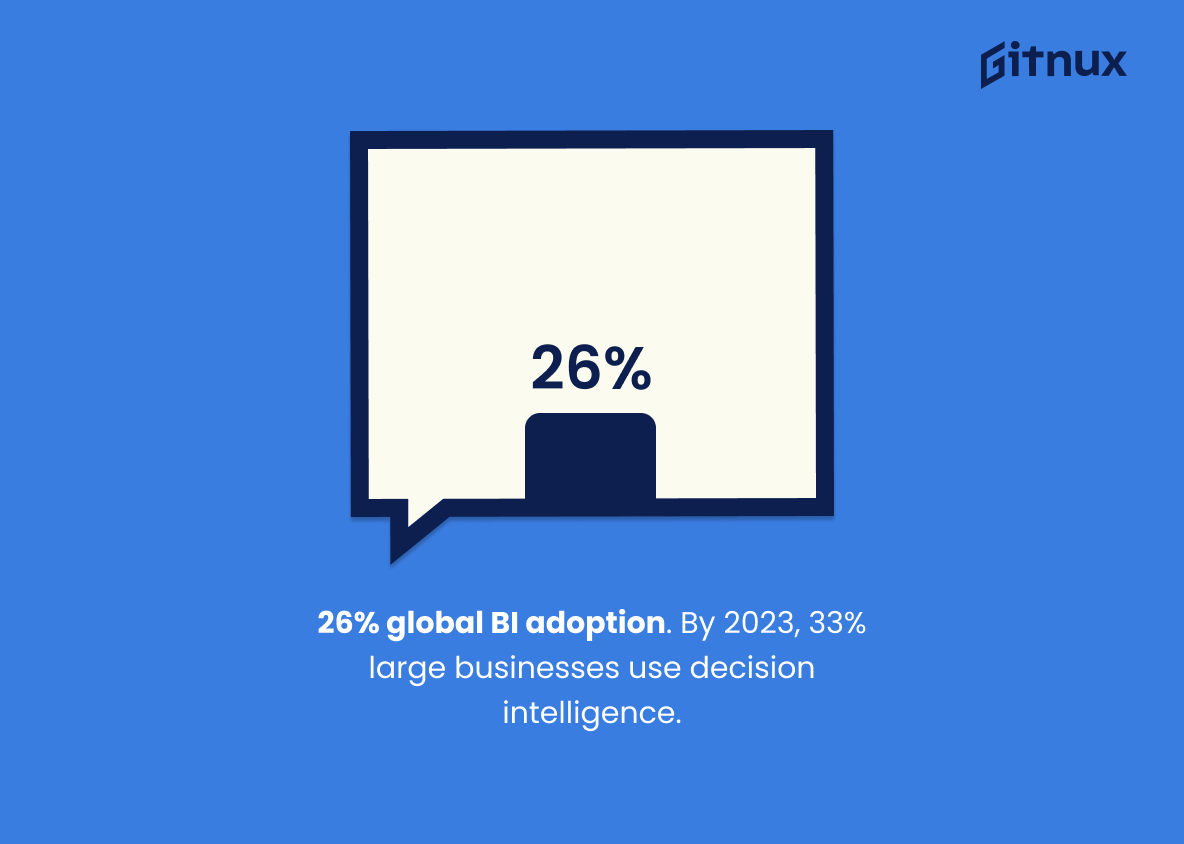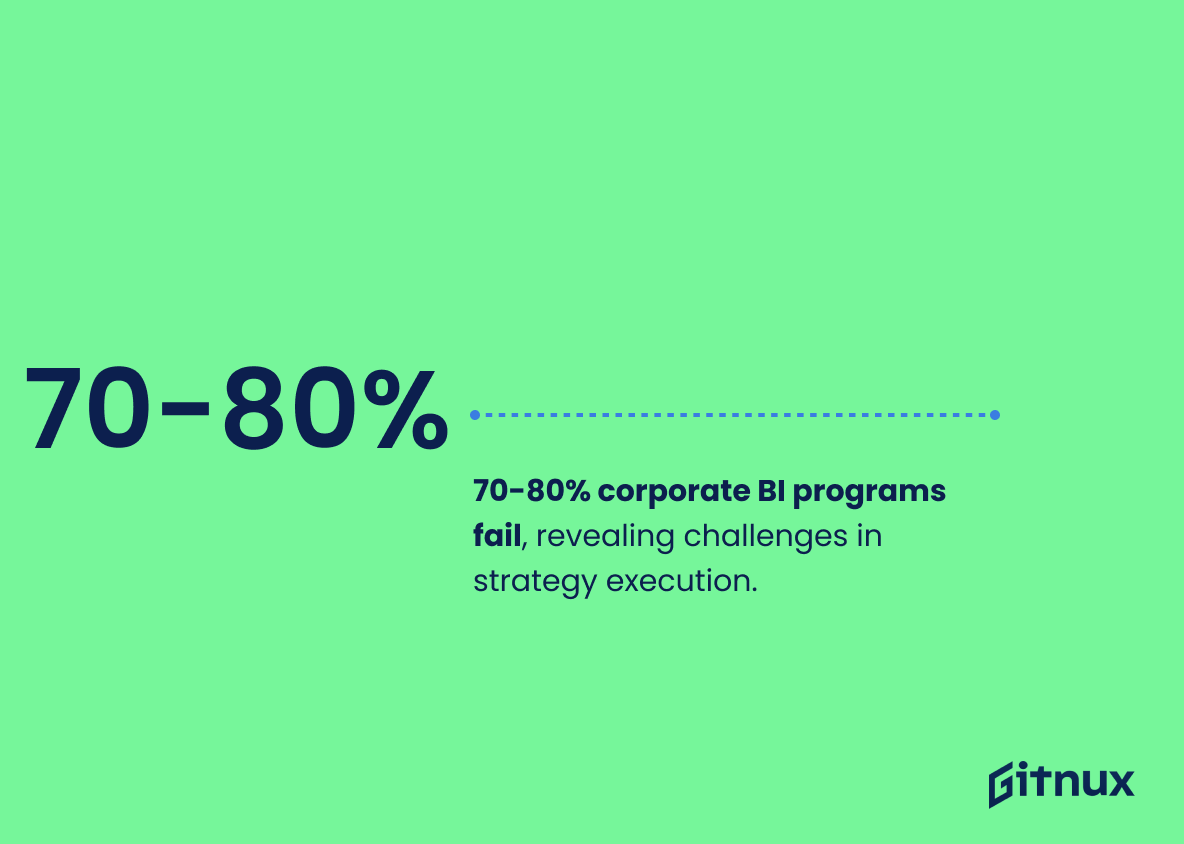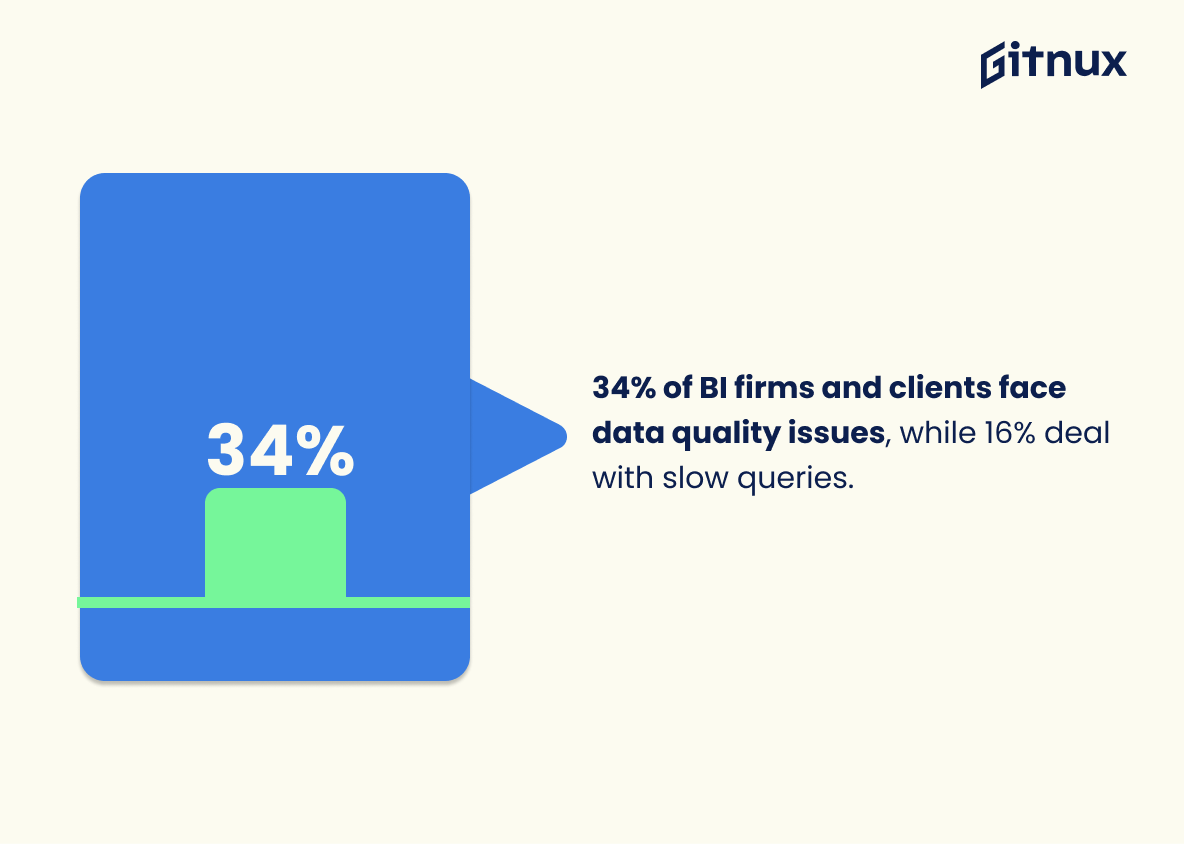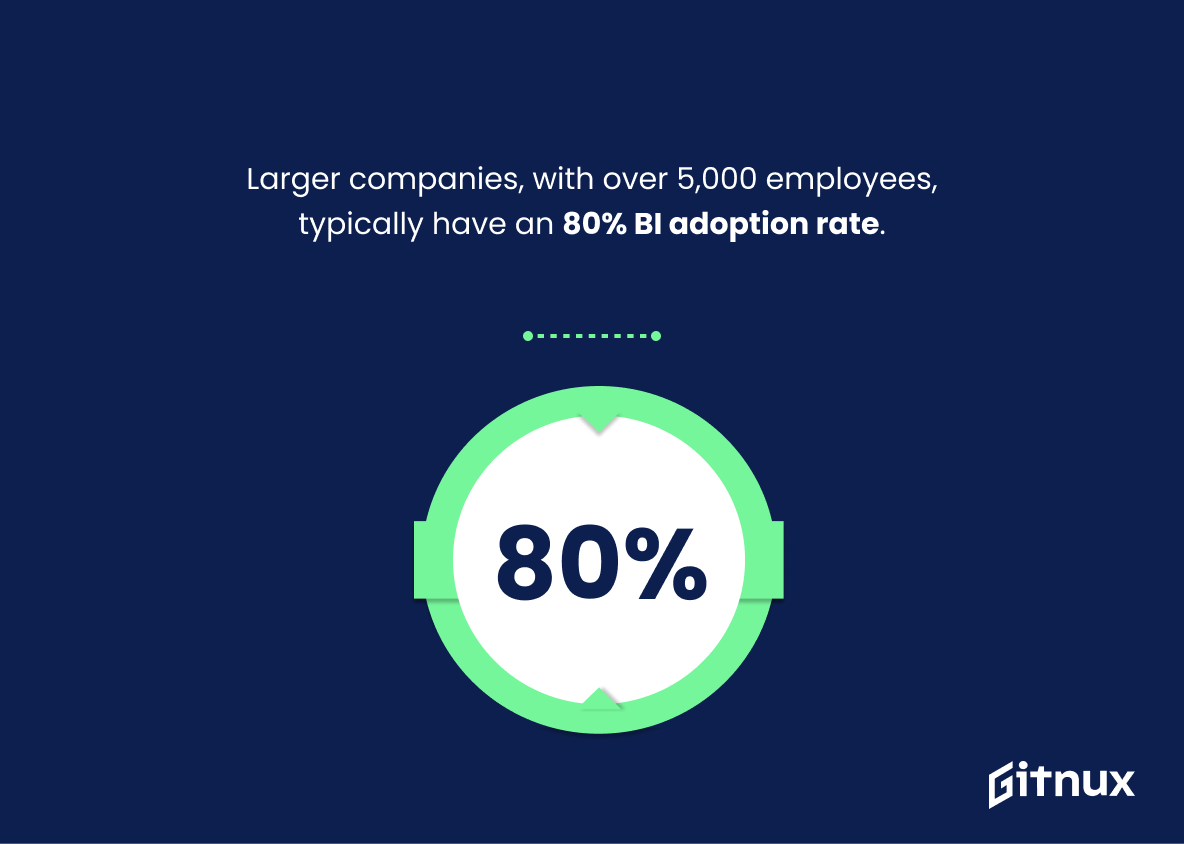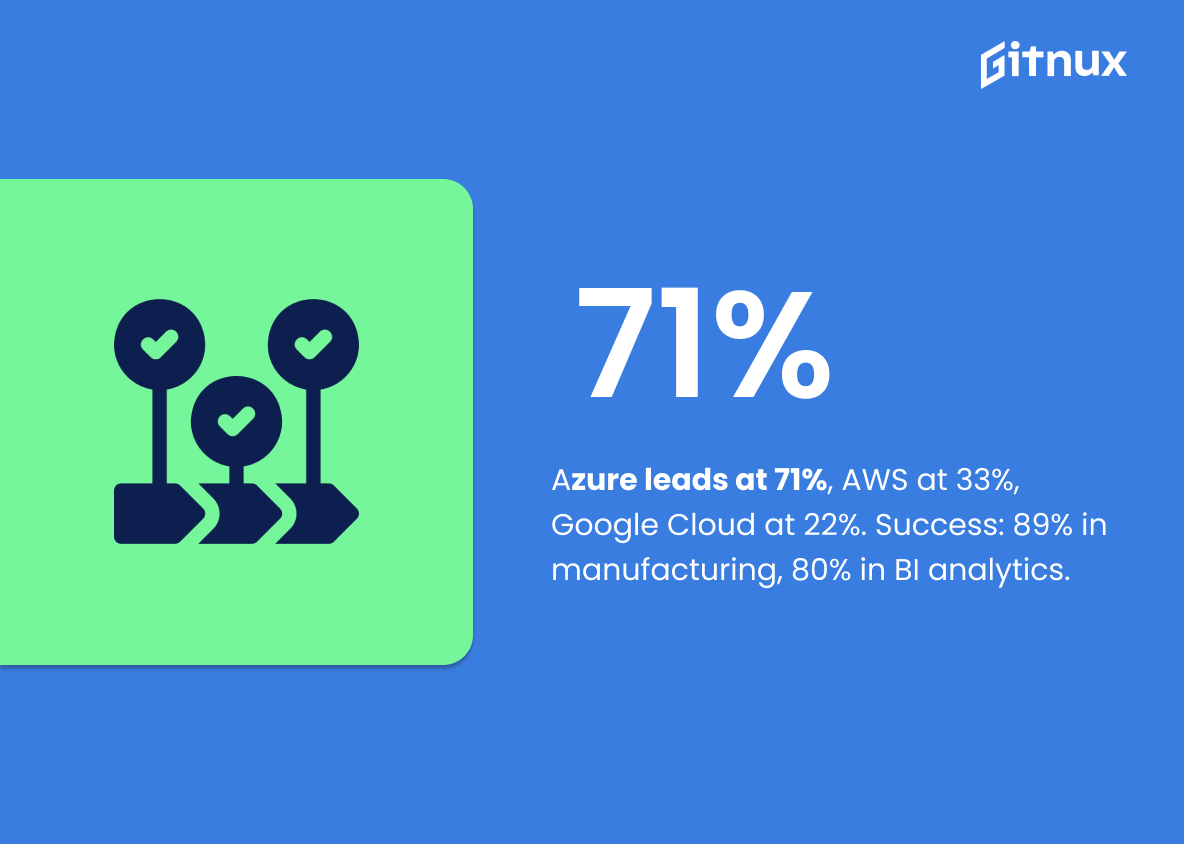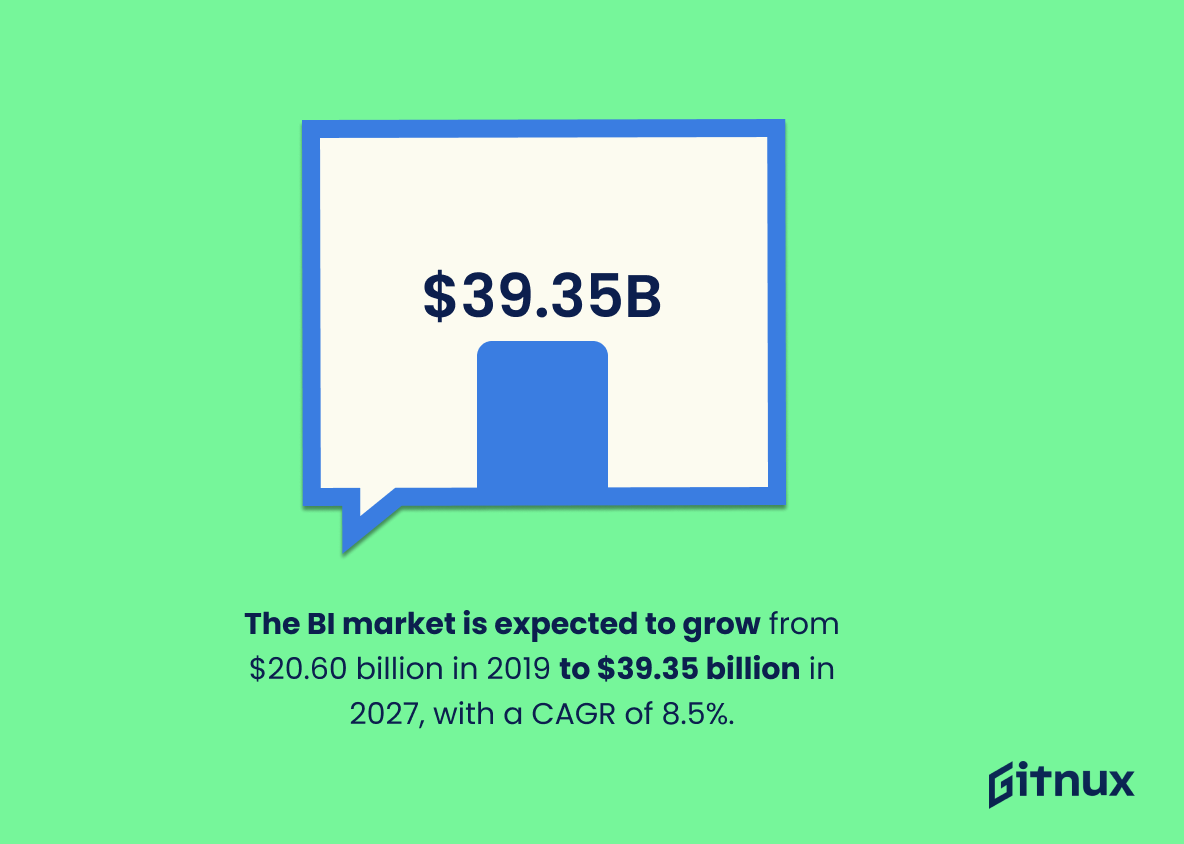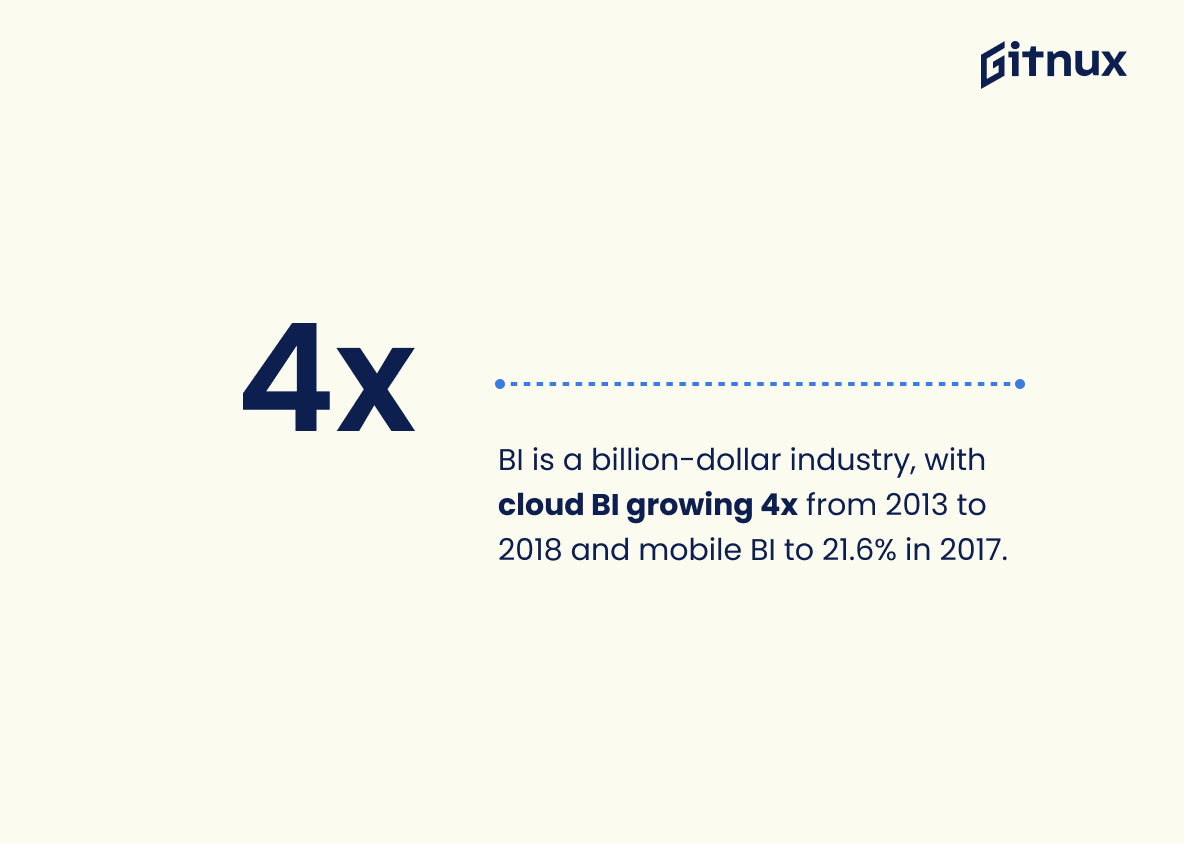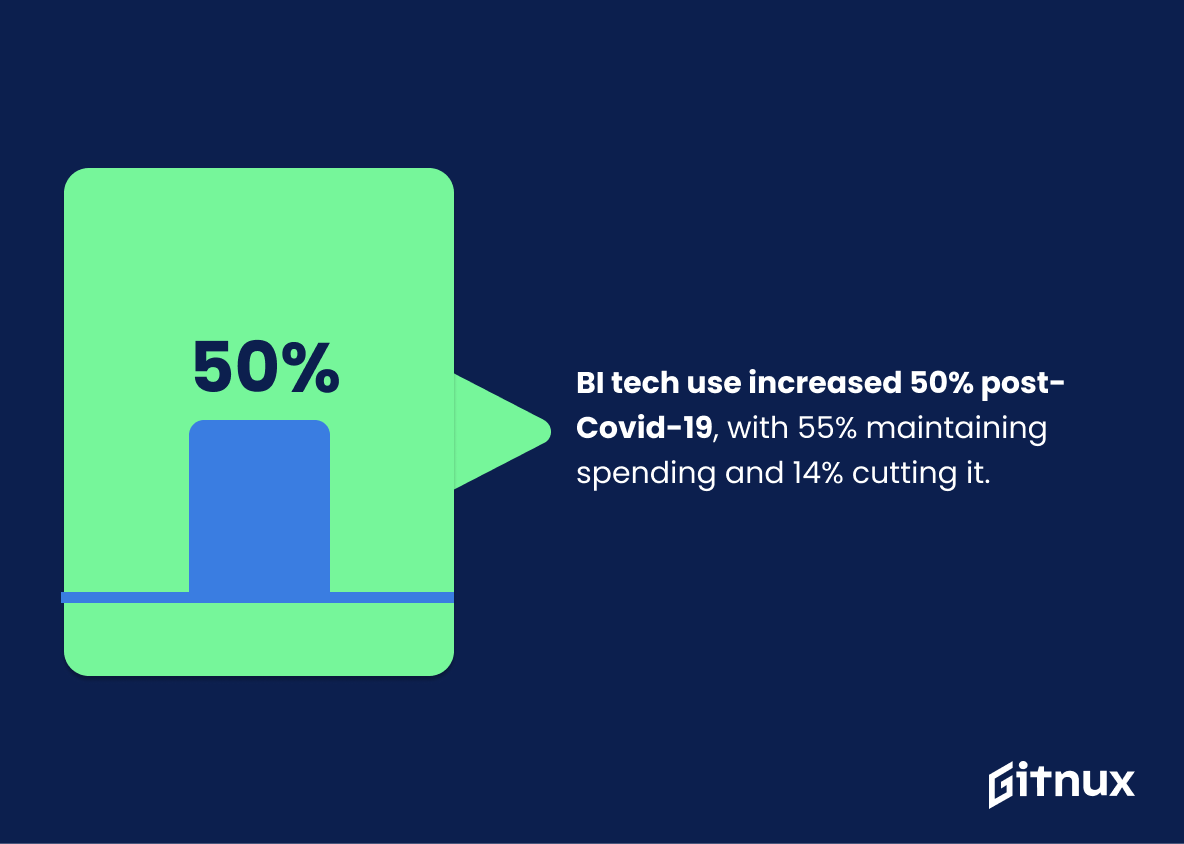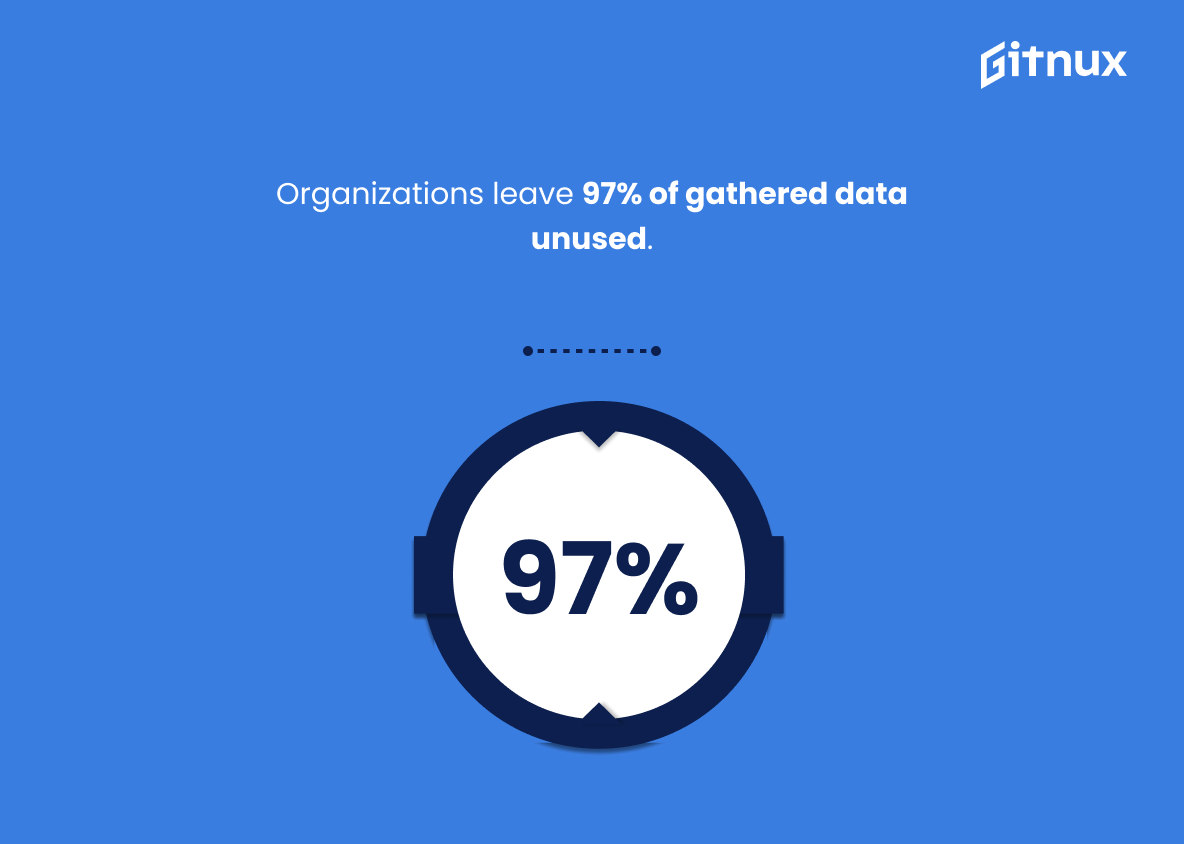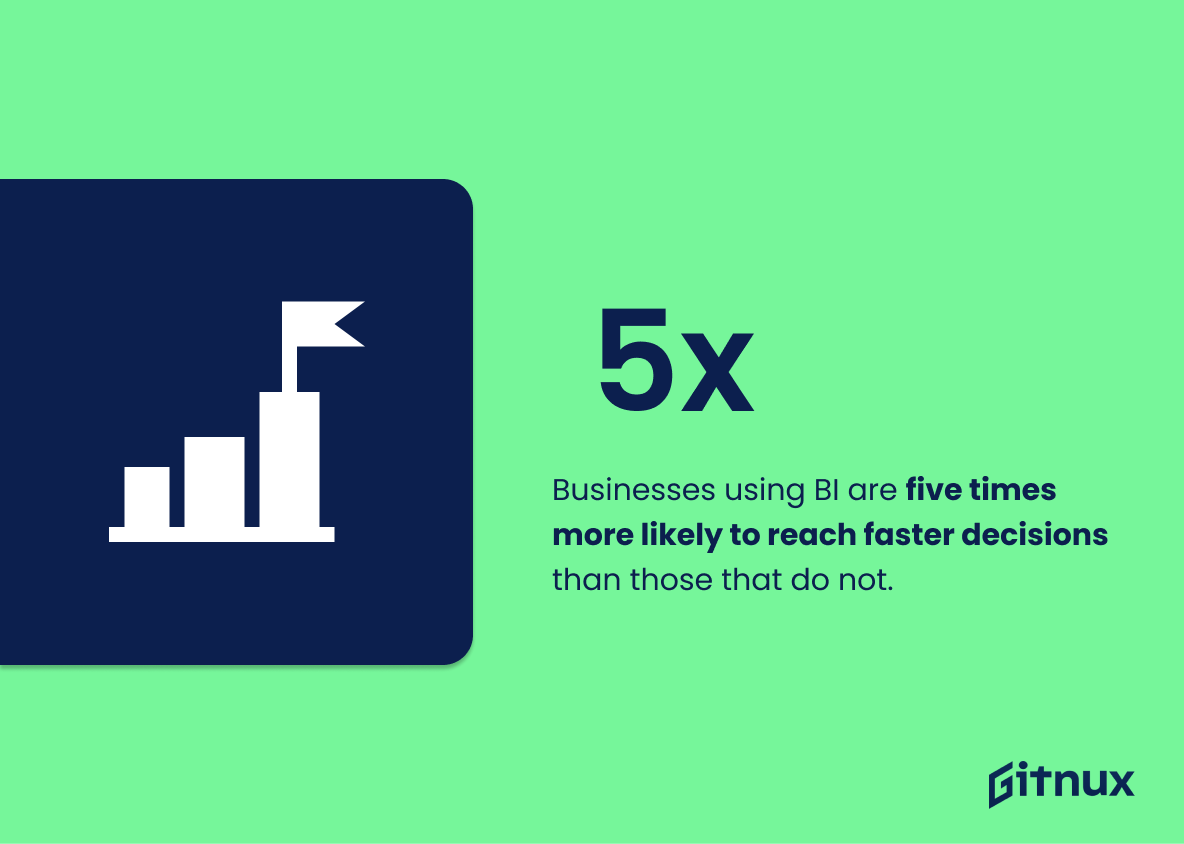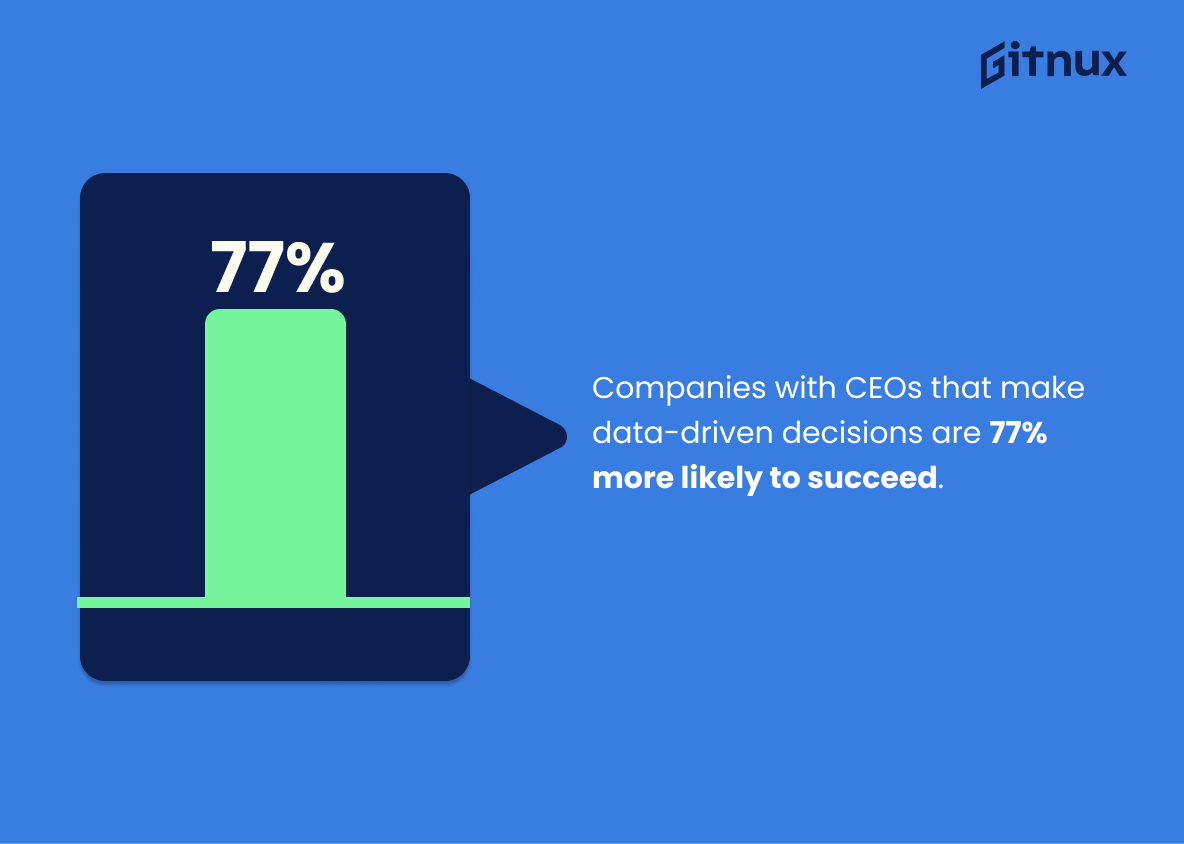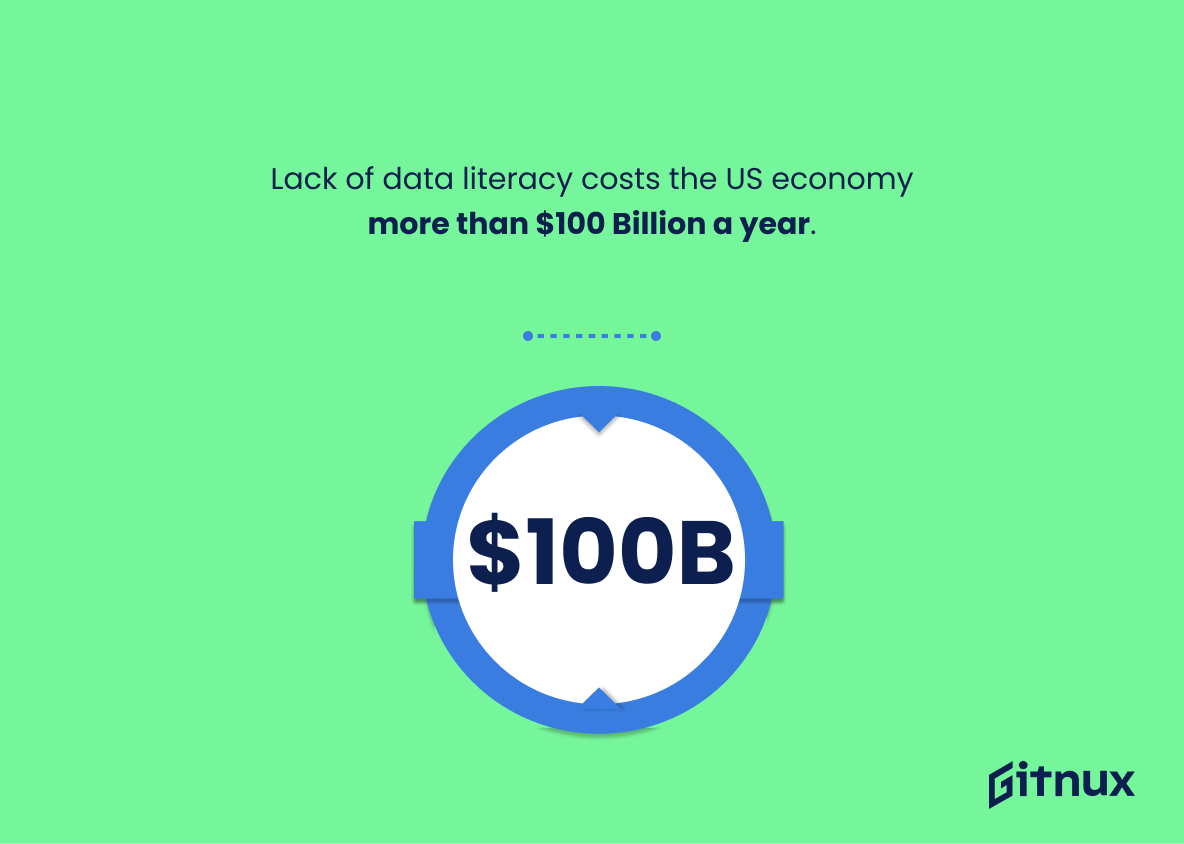Business intelligence (BI) is a powerful tool for any organization. It enables companies to make informed decisions based on data-driven insights. With the right BI strategy, businesses can gain a competitive edge in their respective industries.
But how do you know if your BI strategy is working? That’s where business intelligence statistics come in. In this blog post, we’ll explore the importance of business intelligence statistics and how they can help you track the success of your BI initiatives. We’ll also discuss the different types of BI statistics and how to use them to make better decisions.
Finally, we’ll look at some of the best practices for collecting and analyzing BI statistics. By the end of this post, you’ll have a better understanding of how to use BI statistics to measure the success of your BI initiatives.
Business Intelligence: The Most Important Statistics
50% more teams and customers are using business intelligence technologies than before the Covid-19 pandemic, with 55% of teams maintaining their BI spending levels and 14% reducing their BI spending.
26% of businesses worldwide have implemented BI, and by 2023, more than 33% of large-sized businesses will employ decision intelligence.
Business Intelligence: Statistics Overview
The global business intelligence market was worth $24.05 billion in 2021, the mobile business intelligence market was valued at $8.8 billion in 2020, the global adoption rate was 26%, and businesses using business intelligence are five times more likely to reach faster decisions than those that do not.
This data matters in the context of Business Intelligence Statistics because it demonstrates the size and condition of the market, emphasizes the advantages BI offers to the decision-making process, and highlights the importance of using business intelligence tools to reach faster decisions.
26% of businesses worldwide have implemented BI, and by 2023, more than 33% of large-sized businesses will employ decision intelligence.
This statistic is important because it shows that businesses are increasingly recognizing the importance of using market data to inform their decisions. This is important because it means that businesses are recognizing the value of Business Intelligence Statistics, which can help them to make better decisions and increase their profits.
70-80% of corporate BI programs are unsuccessful. This statistic is important to consider when creating and implementing a BI strategy because it highlights the obstacles businesses face when trying to make their programs successful.
These obstacles, such as user reluctance to adoption and poor data quality, can make it difficult for businesses to compete in the global market. Understanding these obstacles can help businesses create more effective BI strategies and increase their chances of success.
Poor data quality is viewed as a significant issue by 34% of BI companies and their clients, while 16% of BI consumers view sluggish query performance as a serious issue and 21% of BI businesses cite poor data governance as a big concern.
This matters in the context of Business Intelligence Statistics because it shows that there are significant issues with data quality, query performance, and data governance that need to be addressed in order to ensure that BI software is functioning properly and providing accurate insights.
Larger businesses tend to have higher Business Intelligence adoption rates, with an average of 80% for companies with over 5,000 workers.
This statistic is important because it shows that larger companies have more resources to invest in Business Intelligence tools, which can help them better analyze their data and make more informed decisions. This is especially important in today’s digital world, where data is increasingly becoming a key factor in success.
Business intelligence statistics show that Microsoft Azure is the most dependable vendor, with 71% of customers considering it the best, followed by Amazon Web Services (33%) and Google Cloud (22%). 89% of manufacturers employing BI and analytics projects report success, and 8 out of 10 businesses using BI for analytics report success.
This matters in the context of Business Intelligence Statistics because it shows that businesses are increasingly relying on BI and analytics projects to gain a competitive edge, and that Microsoft Azure is the most trusted vendor for these initiatives. It also shows that North America is committed to cloud utilization, and that BI is a crucial tool for sales and marketing departments.
The BI market is expected to grow from $20.60 billion in 2019 to $39.35 billion in 2027, with a CAGR of 8.5%.
This statistic is important because it shows the potential for growth in the BI market and provides insight into the potential for businesses to benefit from investing in BI solutions. It also provides a benchmark for businesses to measure their own growth against.
The business intelligence industry is worth billions of dollars and is expected to keep growing, with the market for cloud-based BI increasing fourfold from 2013 to 2018 and the market for mobile business intelligence increasing 21.6% from 2016 to 2017.
This matters because it shows that the business intelligence industry is a lucrative and growing market, which can be beneficial for businesses to invest in and capitalize on.
50% more teams and customers are using business intelligence technologies than before the Covid-19 pandemic, with 55% of teams maintaining their BI spending levels and 14% reducing their BI spending.
This statistic is important because it shows the impact of the Covid-19 pandemic on the use of business intelligence technologies. It shows that despite the economic downturn, many teams and customers are still investing in business intelligence solutions. This indicates that businesses recognize the importance of leveraging data and analytics to make informed decisions, even in difficult times.
Organizations leave 97% of gathered data unused.
This statistic highlights the need for organizations to make better use of the data they are gathering. Without utilizing the data they collect, organizations are not taking full advantage of the valuable insights they could obtain. Furthermore, without understanding what the data can tell them, organizations are unable to make informed decisions regarding their operations and strategies. Additionally, this statistic points to the potential inefficiencies in data collection, storage, and analysis processes. Improving these processes can lead to increased organizational efficiency and better decision-making.
Businesses using business intelligence are five times more likely to reach faster decisions than those that do not.
This statistic is important because it highlights the value of business intelligence in helping businesses make informed decisions quickly. It shows that businesses that use business intelligence can make decisions faster than those that do not, which can be beneficial in a competitive marketplace. Additionally, it can help businesses make better decisions, as they have access to more data to inform their decision-making process. This can help them gain a competitive advantage over those that do not use business intelligence.
67% of the global workforce has access to business intelligence tools.
This fact provides insight into the degree to which businesses are embracing the use of business intelligence tools to inform their decision-making. Business intelligence tools allow businesses to gain insights into their customer base, competition, market trends, and more. By having access to these tools, businesses can make more informed decisions and gain a competitive edge in their respective industries.
Microsoft Power BI is the most popular BI tool with a 36% market share, followed by Tableau Desktop (20%) and Qlik Sense (11%).
This statistic demonstrates the power of Microsoft Power BI, which has firmly established itself as the leading BI tool in the market. Its strong market share demonstrates its effectiveness and reliability, as well as its ability to provide organizations with the insights they need to make informed decisions. It is also a testament to its user-friendly interface and intuitive features, which have made it the go-to tool for businesses of all sizes.
Companies with CEOs that make data-driven decisions are 77% more likely to succeed.
This statistic shows that businesses that prioritize data-driven decision-making are more likely to be successful than those that do not. Data-driven decision-making allows leaders to make informed decisions based on data analysis and research, giving them a greater chance of achieving success.
Read more about Data-Driven Decision-Making
Lack of data literacy costs the US economy more than $100 Billion a year.
This statistic demonstrates the enormous financial cost of not having a data-literate workforce in the United States. It shows that companies and organizations are not taking advantage of the opportunities that data can offer and are missing out on potential savings and revenue. It also suggests that there is a great need for more data literacy training and education for the workforce.
Only 32 % of business executives surveyed say that they are able to create measurable value from data.
This statistic shows that many business executives are not taking advantage of the potential value of data. Data can be a powerful tool for businesses to gain insights and drive better decision-making. By not leveraging data effectively, businesses are missing out on opportunities to develop new products and services, reduce costs, and improve customer experiences. This statistic emphasizes the need for businesses to make data analysis a priority in order to stay competitive in the modern business world.
The global business intelligence market size is projected to reach USD 33.3 billion by 2025, at a CAGR of 10.1% between 2020 to 2025.
Businesses are increasingly recognizing the value of business intelligence and investing in it to gain a competitive edge. As such, this statistic is an important piece of evidence for any blog post about business intelligence statistics, as it demonstrates the potential of the market and the opportunities it presents.
As of 2021, Tableau, Microsoft Power BI, and Qlik emerged as the top 3 Business intelligence tools as per Gartner magic quadrant.
This statistic is a testament to the fact that Tableau, Microsoft Power BI, and Qlik are the most trusted and reliable Business Intelligence tools available today. It is a reflection of the trust that Gartner has placed in these tools, and it is a clear indication that these tools are the go-to choice for businesses looking to leverage the power of Business Intelligence. This statistic is a valuable insight for anyone looking to make an informed decision when it comes to selecting the right Business Intelligence tool for their organization.
Data analytics and business intelligence is the top technology priority for IT leaders, with 36% of respondents ranked it as their top priority.
They are prioritizing the use of these technologies to gain insights and make informed decisions. This is a testament to the power of business intelligence and its ability to provide organizations with the data they need to stay competitive. As such, this statistic is an important reminder of the value of business intelligence and its potential to help organizations succeed.
In 2023, over 33% of large organizations will have analysts practicing decision intelligence, including decision modeling.
As more and more large organizations adopt decision modeling, it is clear that this technology is becoming a key tool for making informed decisions. This statistic is a testament to the growing importance of decision intelligence in the modern business landscape, and it is a reminder that businesses should be investing in this technology to stay competitive.
The North American region accounts for the largest share, 37.7%, of the global business intelligence market as of 2020.
The region is leading the way in terms of leveraging the technology to gain insights and make informed decisions. This is an important point to consider when discussing the importance of Business Intelligence and its potential to drive growth and success.
Only 34% of organizations consider themselves as highly data-driven.
The majority of organizations are not taking full advantage of the insights that data can provide, leaving them at a disadvantage compared to those that are highly data-driven.
By 2023, natural language generation will be the most common BI use case for AI technologies.
Natural language generation will become the go-to tool for AI-driven BI solutions, allowing businesses to quickly and accurately generate insights from their data. This could revolutionize the way businesses make decisions, as they will be able to access more accurate and timely information than ever before. As such, this statistic is a key indicator of the potential of AI-driven BI solutions and the impact they could have on businesses in the near future.
Small and medium-scale enterprises are expected to adopt BI tools at a compound annual growth rate (CAGR) of 10% until 2025.
This highlights the growing trend of businesses investing in BI tools to gain a competitive edge and stay ahead of the curve. This statistic is a clear indication that businesses are recognizing the value of BI tools and are willing to invest in them to gain a competitive advantage. This is an important statistic for any blog post about Business Intelligence Statistics as it shows the growing importance of BI tools in the business world.
Only 57% of businesses report that they acquire vital information from their Business intelligence tools.
A significant portion of businesses are not leveraging the insights that these tools can provide, and are thus missing out on the opportunity to make informed decisions and gain a competitive edge.
Data-driven companies are 23x more likely to acquire customers and 6x more likely to retain customers.
This is a crucial insight for any business looking to maximize their customer base and ensure customer loyalty. By leveraging the power of data-driven insights, businesses can gain a competitive edge and ensure their success in the long run.
53% of companies use big data analytics for their businesses, which forms a major part of BI initiatives.
A majority of companies are leveraging the insights provided by big data analytics to make informed decisions and gain a competitive edge. This highlights the importance of BI initiatives in today’s business landscape and the need for organizations to invest in such initiatives to stay ahead of the curve.
There is an estimated 187% growth in worldwide data every year, making BI tools even more essential for businesses.
With such a rapid growth in data, businesses must have the right tools in place to make sense of it all. Business Intelligence tools are essential for businesses to be able to analyze and interpret the data in order to make informed decisions and stay competitive.
For organizations that consider themselves data-driven, these companies have seen an increase in their productivity by 20 to 30%.
By leveraging data-driven insights, companies can unlock a wealth of potential, leading to a significant boost in productivity. This statistic serves as a reminder of the importance of Business Intelligence and the potential it holds for organizations.
The total market size for business intelligence and analytics software stood at $22.6 billion in 2020.
Businesses are investing heavily in these tools to gain insights into their operations and make informed decisions. This highlights the importance of business intelligence and analytics software in today’s competitive market, and serves as a reminder of the potential benefits that can be gained from using these tools.
About 80% of business executives believe that Artificial Intelligence in BI applications would give them a competitive advantage.
The majority of business executives recognize the value of AI in giving them a competitive edge. This highlights the importance of AI in the BI landscape and the need for businesses to invest in AI-driven BI solutions to stay ahead of the competition.
By 2025, the business intelligence market in the Asia-Pacific region is projected to grow at a CAGR of 12.8%.
The region is ripe for investment and that businesses should be looking to capitalize on the opportunities that the region presents. With a projected CAGR of 12.8%, the Asia-Pacific region is set to become a major player in the business intelligence market, and businesses should be taking advantage of this potential.
Conclusion
Business intelligence statistics can be a powerful tool for businesses to gain insights into their operations and make data-driven decisions. By leveraging the power of BI statistics, businesses can gain a better understanding of their customers, their markets, and their operations.
This can help them to make more informed decisions and improve their bottom line. With the right BI tools and strategies, businesses can take advantage of the power of BI statistics to gain a competitive edge and increase their profits.
References
DataProt: “Business Intelligence Statistics: State of the Market in 2022”, cited February 2023. (Source)
EnterpriseAppsToday: “Business Intelligence Statistics 2022 – Usage Stat, Employee Data Literacy, Adoption and Jobs Statistics”, cited February 2023. (Source)
Redalyc: “Data and Business Intelligence Systems for Competitive Advantage: prospects, challenges, and real-world applications”, cited February 2023. (Source)
Data Bridge Market Research: “COVID-19 Impact on Business Intelligence Market in ICT Industry”, cited February 2023. (Source)
TrustRadius: “49 Shocking Business Intelligence Statistics for 2021”, cited February 2023. (Source)
ZipDo, cited June 2023: Business Intelligence Statistics

